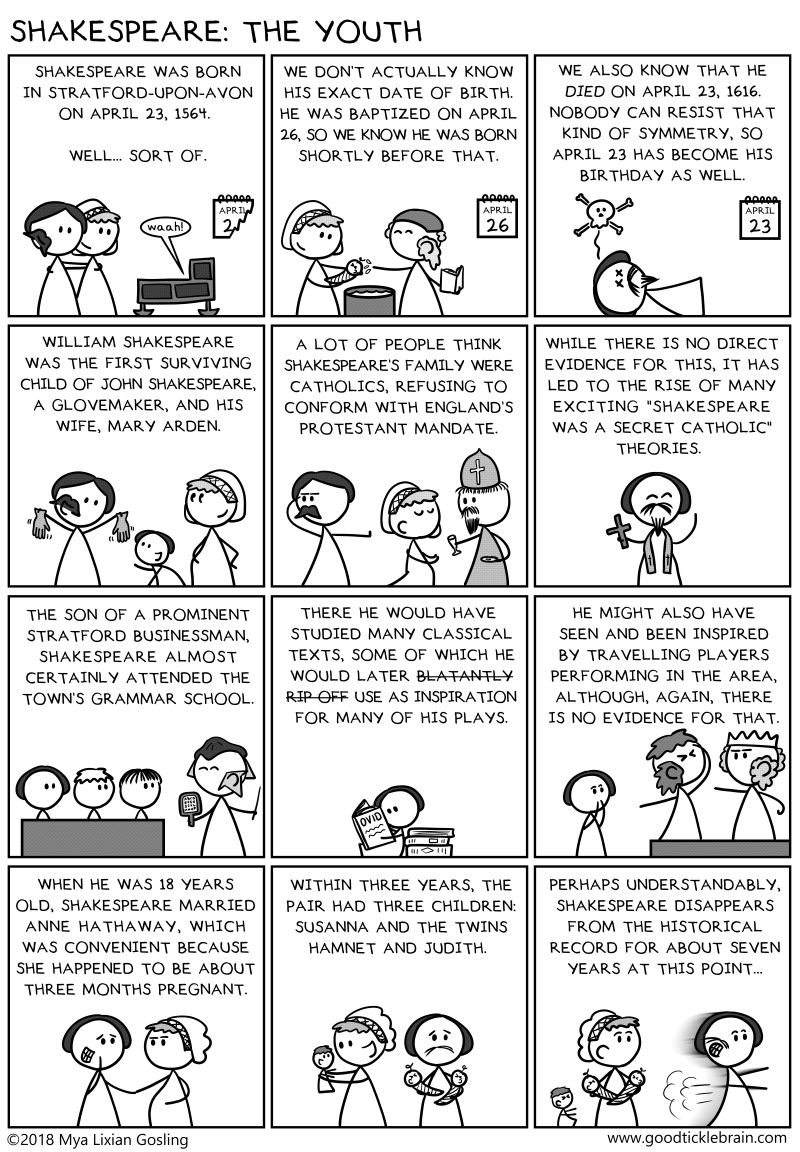It's SHAKESPEARE MONTH here at Good Tickle Brain! Today we take a look at one of the most exciting period in Shakespeare's life: that seven-year gap when we have no documentation as to his activites and can thus imagine him doing ANYTHING.
I kind of love it that we don't know exactly what Shakespeare was doing during this time. It's nice to have a few unanswered questions.
Tune in Thursday to see Shakespeare's triumphant emergence in London!









